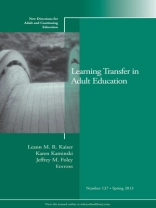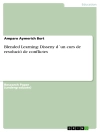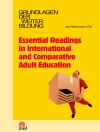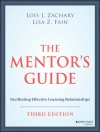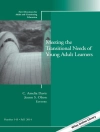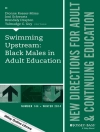Learning transfer is the use of skills and knowledge acquired in one situation or setting in a different environment. It is, fundamentally, the point of education. By consciously building it into our curricula, syllabi, and practice, we can greatly enhance the likelihood that students will integrate their learning and their lives.
This issue examines learning transfer across the breadth of adult education. The authors approach the question practically, looking at techniques such as experiential or problem-based learning and the use of classroom technology as well as the perspectives of brain research, the effects of race and culture, and the context and complications of personal change. Each chapter offers practitioners a thoughtful outlook that will help them plan for and implement learning transfer in their particular area of focus.
This is 137th volume of the Jossey-Bass quarterly report series New Directions for Adult and Continuing Education. Noted for its depth of coverage, it explores issues of common interest to instructors, administrators, counselors, and policymakers in a broad range of adult and continuing education settings, such as colleges and universities, extension programs, businesses, libraries, and museums.
Inhaltsverzeichnis
EDITORS‘ NOTES 1
Leann M. R. Kaiser, Karen Kaminski, Jeffrey M. Foley
1. Learning Transfer and Its Intentionality in Adult and Continuing Education 5
Jeffrey M. Foley, Leann M. R. Kaiser
While transfer of learning is the ultimate goal of anyinstructional setting, adult educators have few resources they canrely on to support planning for transfer. This chapter offers anintroduction to the concept of learning transfer and initial ideasfor building this into our educational practices.
2. Leveraging Experiential Learning Techniques for Transfer17
Nate Furman, Jim Sibthorp
This chapter describes how experiential learning techniques canbe helpful in encouraging learning transfer as these techniques canfoster a depth of learning and cognitive recall necessary fortransfer.
3. Problem-Based Learning: A Learning Environment for Enhancing Learning Transfer 27
Woei Hung
Problem-based learning helps students make connections betweentheory and real-world application. This chapter provides practicalmethods for using problem-based learning to enhance thelikelihood
of learning transfer.
4. Considering Components, Types, and Degrees of Authenticity in Designing Technology to Support Transfer 39
Patricia L. Hardré
This chapter discusses the concept of authenticity in relationto using technology to enhance learning and support transfer.
5. Brain-Friendly Teaching Supports Learning Transfer 49
Jacqueline Mc Ginty, Jean Radin, Karen Kaminski
The authors present the workings of the human brain and how thisknowledge can be used to create brain-friendly learningenvironments that support transfer of learning.
6. Racial and Cultural Factors and Learning Transfer 61
Rosemary Closson
This chapter addresses the potential infl uence of includingethnicity or culture as a variable in the learning transferprocess.
7. Understanding Transfer as Personal Change: Concerns, Intentions, and Resistance 71
Jeani C. Young
Personal change stemming from learning experiences is the focusof this chapter. Models of change and transition are used toexplain the occurrence of and resistance to transfer.
8. Applying Transfer in Practice 83
Karen Kaminski, Jeffrey M. Foley, Leann M. R. Kaiser
The authors offer a synthesis of the ideas presented in previouschapters by encouraging an application of learning transfer toadult learning settings.
Index 9
Über den Autor
Leann M. R. Kaiser and Karen Kaminski are the authors of Learning Transfer in Adult Education: New Directions for Adult and Continuing Education, Number 137, published by Wiley.
